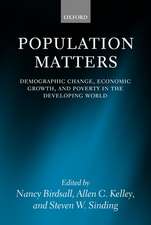Understanding Family Change and Variation: Toward a Theory of Conjunctural Action: Understanding Population Trends and Processes, cartea 5
Autor Jennifer A. Johnson-Hanks, Christine A. Bachrach, S. Philip Morgan, Hans-Peter Kohler Contribuţii de Lynette Hoelter, Rosalind King, Pamela Smocken Limba Engleză Paperback – 27 noi 2013
| Toate formatele și edițiile | Preț | Express |
|---|---|---|
| Paperback (1) | 635.65 lei 6-8 săpt. | |
| SPRINGER NETHERLANDS – 27 noi 2013 | 635.65 lei 6-8 săpt. | |
| Hardback (1) | 641.85 lei 6-8 săpt. | |
| SPRINGER NETHERLANDS – 28 aug 2011 | 641.85 lei 6-8 săpt. |
Preț: 635.65 lei
Preț vechi: 747.82 lei
-15% Nou
Puncte Express: 953
Preț estimativ în valută:
121.64€ • 130.07$ • 101.41£
121.64€ • 130.07$ • 101.41£
Carte tipărită la comandă
Livrare economică 17 aprilie-01 mai
Preluare comenzi: 021 569.72.76
Specificații
ISBN-13: 9789400737006
ISBN-10: 9400737009
Pagini: 200
Ilustrații: XX, 180 p.
Dimensiuni: 155 x 235 x 11 mm
Greutate: 0.29 kg
Ediția:2011
Editura: SPRINGER NETHERLANDS
Colecția Springer
Seria Understanding Population Trends and Processes
Locul publicării:Dordrecht, Netherlands
ISBN-10: 9400737009
Pagini: 200
Ilustrații: XX, 180 p.
Dimensiuni: 155 x 235 x 11 mm
Greutate: 0.29 kg
Ediția:2011
Editura: SPRINGER NETHERLANDS
Colecția Springer
Seria Understanding Population Trends and Processes
Locul publicării:Dordrecht, Netherlands
Public țintă
ResearchCuprins
Introduction.- Chapter 1: The Theory of Conjunctural Action.- Chapter 2: Consilience.- Chapter 3: Fertility Change and Variation: S. Philip Morgan and Hans-Peter Kohler.- Chapter 4: Social Class and the Timing and Context of Childbearing: Christine Bachrach, Pamela Smock, and Lynette Hoelter.- Chapter 5: A Conjunctural History of Assisted Reproductive Technologies: Jennifer Johnson-Hanks and Rosalind King.- Conclusion.
Recenzii
This volume authored by renowned socio-demographers is a remarkable "enterprise".
European Journal of Population 28:2 (2012)
European Journal of Population 28:2 (2012)
Textul de pe ultima copertă
Fertility rates vary considerably across and within societies, and over time. Over the last three decades, social demographers have made remarkable progress in documenting these axes of variation, but theoretical models to explain family change and variation have lagged behind. At the same time, our sister disciplines—from cultural anthropology to social psychology to cognitive science and beyond—have made dramatic strides in understanding how social action works, and how bodies, brains, cultural contexts, and structural conditions are coordinated in that process. Understanding Family Change and Variation: Toward a Theory of Conjunctural Action argues that social demography must be reintegrated into the core of theory and research about the processes and mechanisms of social action, and proposes a framework through which that reintegration can occur. This framework posits that material and schematic structures profoundly shape the occurrence, frequency, and context of the vital events that constitute the object of social demography. Fertility and family behaviors are best understood as a function not just of individual traits, but of the structured contexts in which behavior occurs. This approach upends many assumptions in social demography, encouraging demographers to embrace the endogeneity of social life and to move beyond fruitless debates of structure versus culture, of agency versus structure, or of biology versus society.
Caracteristici
Provides a new theoretical framework for understanding fertility variation and change Integrates family demography with social theory Synthesizes knowledge from social and cognitive sciences Provides a number of innovative ideas to explicate mechanisms of family change






















